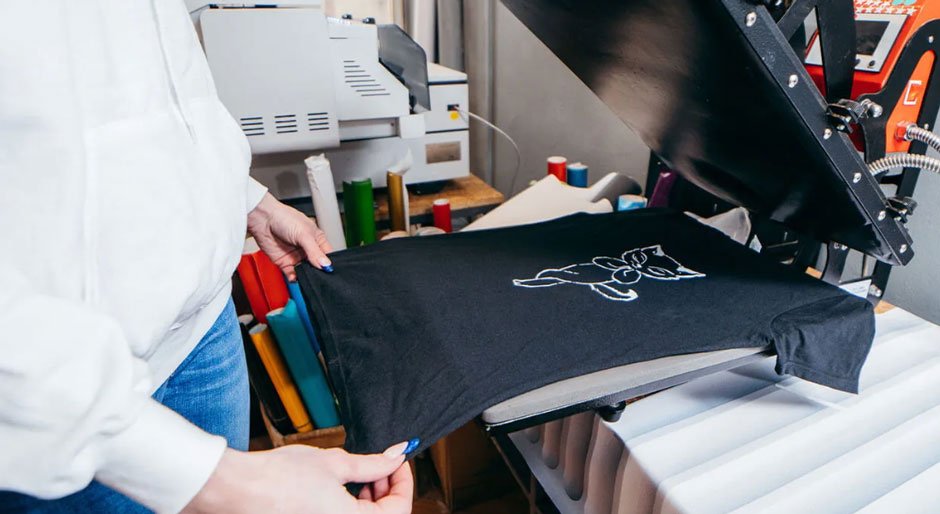In the world of fashion and branding, custom t-shirts have become a go-to option for individuals and businesses alike. Whether you’re creating personalized apparel for your family reunion, launching a clothing line, or promoting your brand, choosing the right printing method can make all the difference. The printing method you select affects not just the look and feel of your design but also its durability, cost, and scalability.
Modern t-shirt printing methods offer exciting possibilities, combining advanced technology with tried-and-true techniques. Let’s dive into the most popular options available today.
Direct-to-Film (DTF) Printing: A Versatile Game-Changer
Direct-to-film (DTF) printing is quickly becoming a favorite among custom t-shirt creators. This method involves printing a design onto a special film, which is then transferred to fabric using heat and adhesive powder. It’s a straightforward process, but the results are anything but simple.
The versatility of DTF printing is unmatched. Unlike some methods that work best on specific materials, DTF printing can be used on cotton, polyester, and even blended fabrics. This makes it ideal for small businesses and hobbyists who need flexibility. Plus, the colors it produces are vibrant, with excellent detail retention.
Another major advantage is durability. DTF prints are highly resistant to cracking and peeling, ensuring that your custom t-shirts look great wash after wash. Whether you’re printing a bold logo or an intricate piece of artwork, DTF handles it all with ease.
For small batches or one-off designs, DTF is cost-effective and practical. It’s no wonder this method is rapidly gaining popularity in the custom t-shirt industry.
Screen Printing: The Time-Tested Classic
If you’ve ever owned a custom t-shirt, chances are it was screen-printed. This traditional method, which uses stencils and mesh screens to layer ink onto fabric, has been a staple in the printing world for decades.
Screen printing is known for its vibrant colors and durability, making it perfect for large-volume orders. For businesses looking to achieve high-quality results at scale, wholesale screen printing is an ideal solution. The thick layers of ink used in this method create a bold, eye-catching effect that stands out. However, screen printing is most efficient when working with simple designs and a limited number of colors.
One downside to this technique is the setup cost. Each design requires a separate screen, which can be time-consuming and expensive for small batches or highly detailed designs. But if you’re looking to print a large quantity of shirts with a simple logo or slogan, screen printing is hard to beat.
Brands and organizations often turn to this method for promotional items, uniforms, and event merchandise. It’s reliable, cost-effective in bulk, and produces long-lasting results.
Direct-to-Garment (DTG) Printing: Perfect for Complex Designs
Direct-to-garment (DTG) printing takes t-shirt customization to the next level. This digital method uses specialized printers to apply designs directly onto the fabric, much like an inkjet printer works with paper. The result? Exceptionally detailed prints that capture gradients, fine lines, and photographic images.
DTG is particularly well-suited for complex, multi-colored designs. Artists and designers love this method for its ability to reproduce even the most intricate details with stunning accuracy. Plus, it’s eco-friendly. DTG printers use water-based inks that are less harmful to the environment than traditional screen printing inks.
However, there are some limitations. DTG works best on 100% cotton fabrics and tends to be slower than other methods for large-scale production. It’s an excellent choice for small batches, especially when quality is a top priority.
For those starting a custom t-shirt business, DTG offers a user-friendly solution with minimal setup costs. It’s perfect for creating high-quality designs that stand out.
Sublimation Printing: The Go-To for Polyester
Sublimation printing is a unique method that uses heat to transfer dye into the fibers of a fabric, creating a seamless and durable print. This technique is particularly effective for polyester and other synthetic materials, making it a favorite for sportswear and activewear.
One of the standout features of sublimation printing is its ability to produce vibrant, full-color designs that don’t peel, crack, or fade. The ink becomes part of the fabric, resulting in a smooth, soft finish that feels as good as it looks.
However, sublimation does have its limitations. It works best on light-colored, polyester-based materials and isn’t suitable for cotton fabrics. If your project involves jerseys, workout gear, or performance wear, sublimation is an excellent choice.
The method is widely used in the athletic and promotional apparel industries, offering high-quality results that last.
Heat Transfer Printing: Affordable and Flexible
For small-scale projects and personal use, heat transfer printing offers a simple and accessible solution. This method involves printing a design onto a transfer paper or vinyl, which is then pressed onto fabric using heat and pressure.
Heat transfer printing is highly versatile, accommodating a wide range of fabrics and design styles. It’s also cost-effective, making it a popular choice for hobbyists and small businesses. If you’re creating personalized t-shirts for an event or testing out new designs, heat transfer is a great starting point.
That said, heat transfer prints are generally less durable than those produced by other methods. They may crack or peel over time, especially with frequent washing. For long-lasting results, it’s best to use high-quality materials and follow care instructions closely.
Despite its limitations, heat transfer remains a go-to method for custom t-shirts, particularly for short runs or one-off designs.
Choosing the Right Printing Method
With so many t-shirt printing methods available, how do you decide which one is right for you? Start by considering these key factors:
- Design Complexity: Detailed designs with gradients or fine lines are best suited for methods like DTG or sublimation.
- Fabric Type: Different methods work better on certain materials. For example, sublimation is ideal for polyester, while screen printing excels on cotton.
- Batch Size: Large orders often call for screen printing, while smaller batches benefit from DTF or heat transfer.
- Durability: For long-lasting designs, DTF and screen printing are excellent options.
- Budget: Heat transfer and DTF are cost-effective for beginners, while screen printing and sublimation are better for bulk orders.
Experimenting with different methods or consulting a professional printer can help you achieve the perfect results for your custom t-shirts.
Conclusion: Unlock Your Creative Potential
Custom t-shirt printing has never been easier, thanks to the wide range of modern methods available today. From the versatility of Direct-to-Film printing to the timeless appeal of screen printing, each technique offers unique advantages that cater to different needs.
Whether you’re a budding entrepreneur, an artist, or simply someone with a vision for a standout design, the right printing method can bring your ideas to life. So, take the leap, explore your options, and start creating custom t-shirts that turn heads and make lasting impressions. The possibilities are endless.









